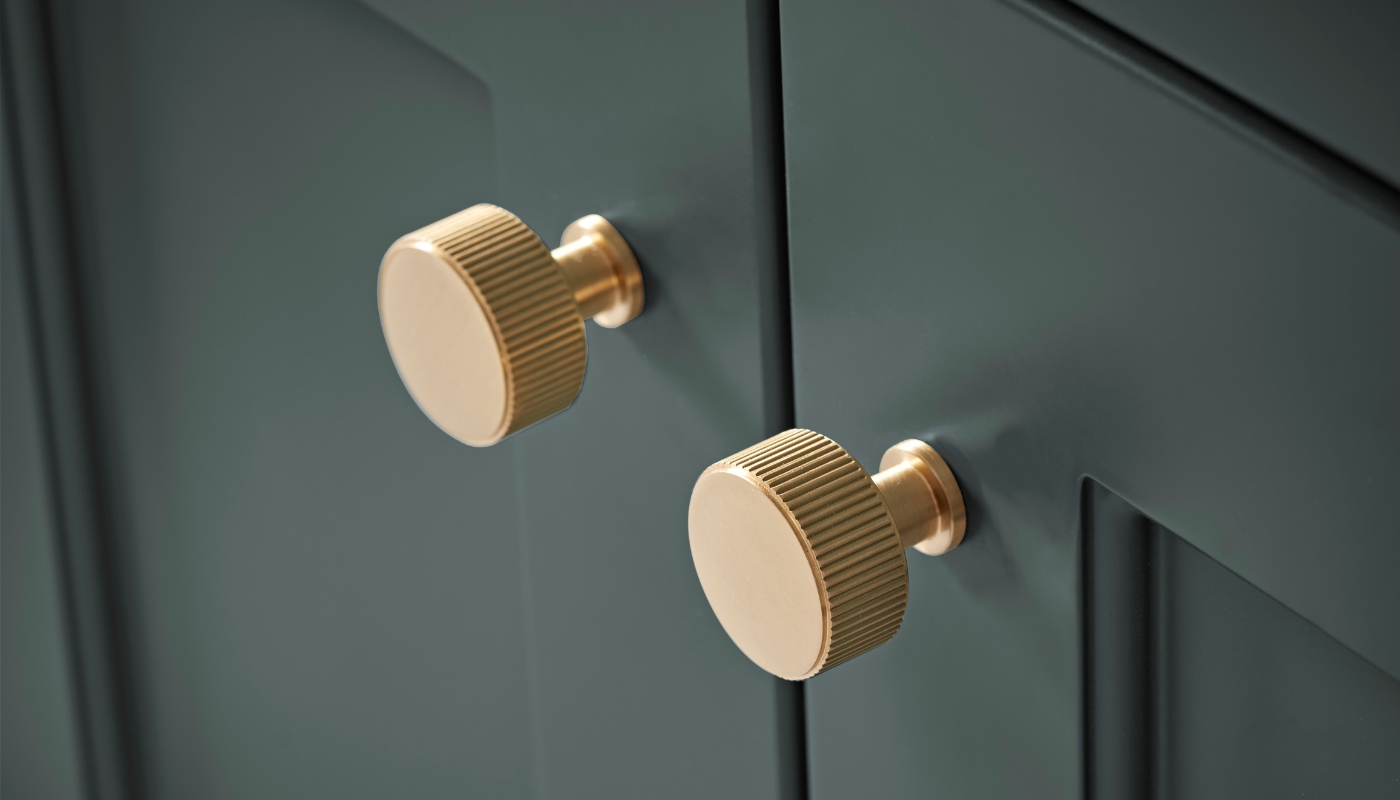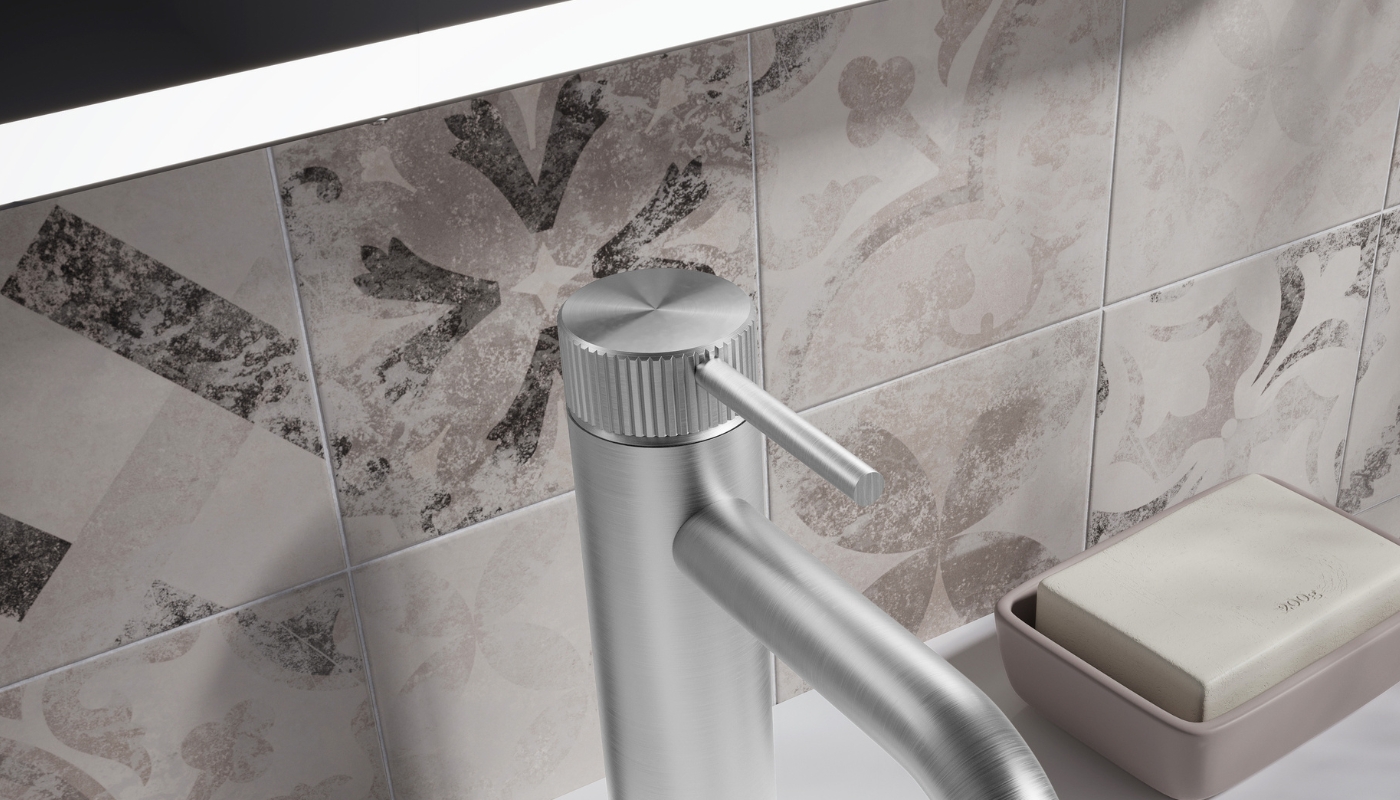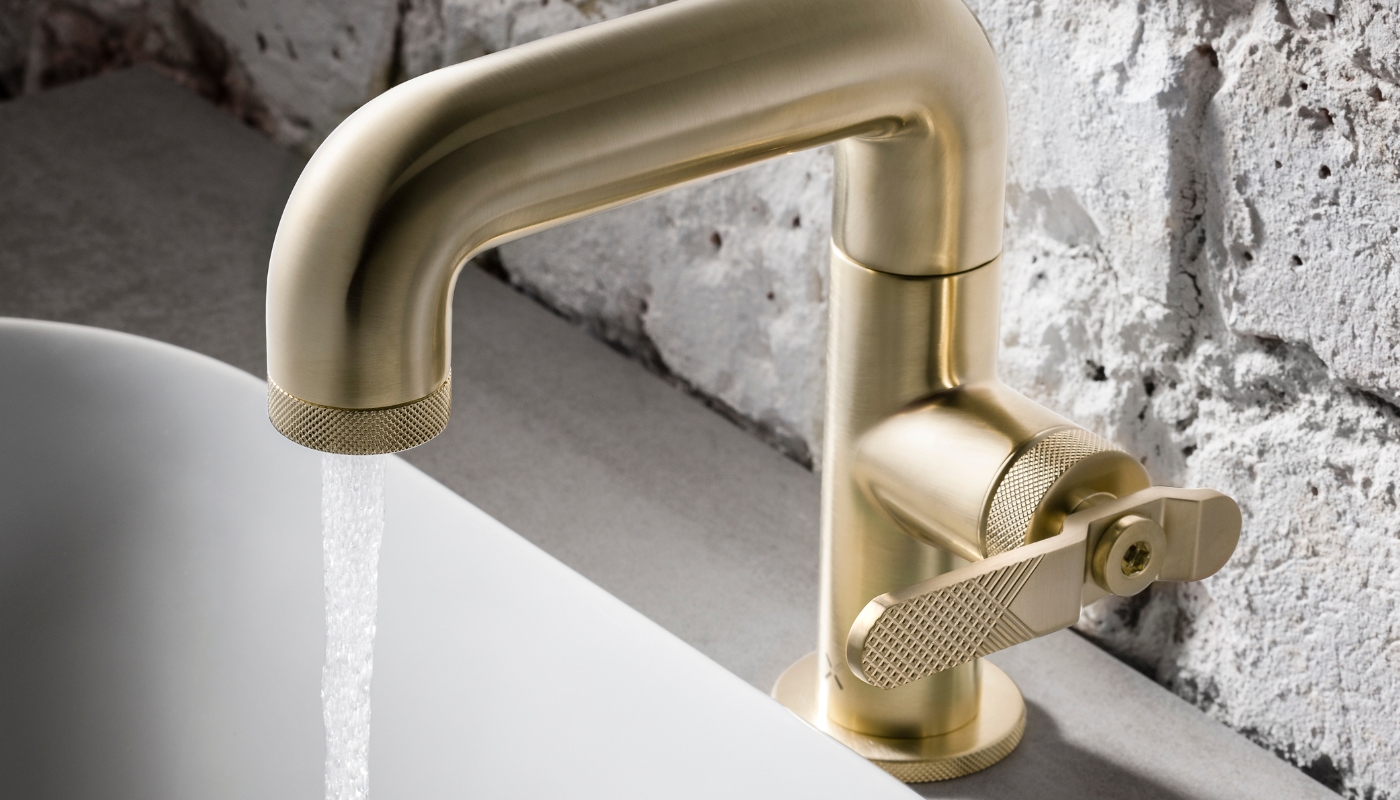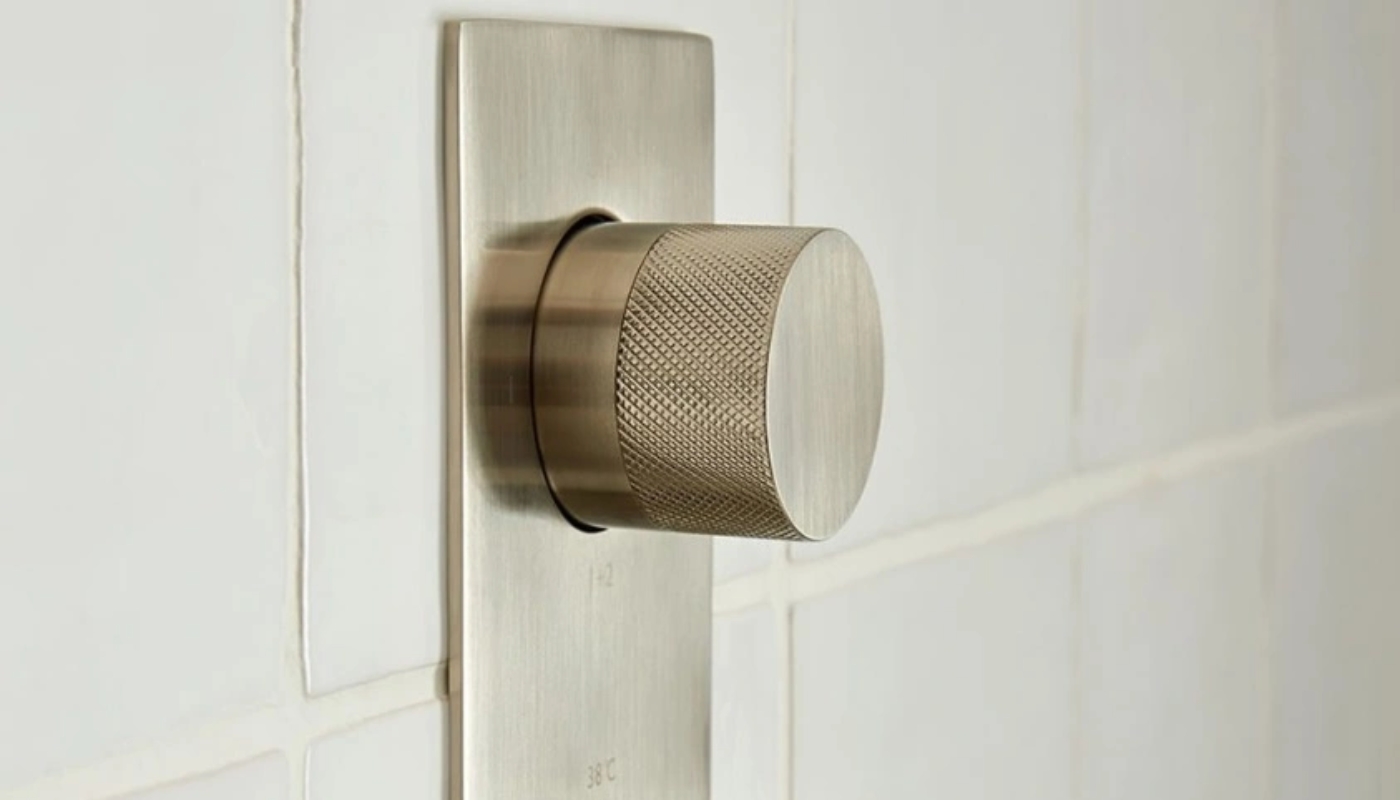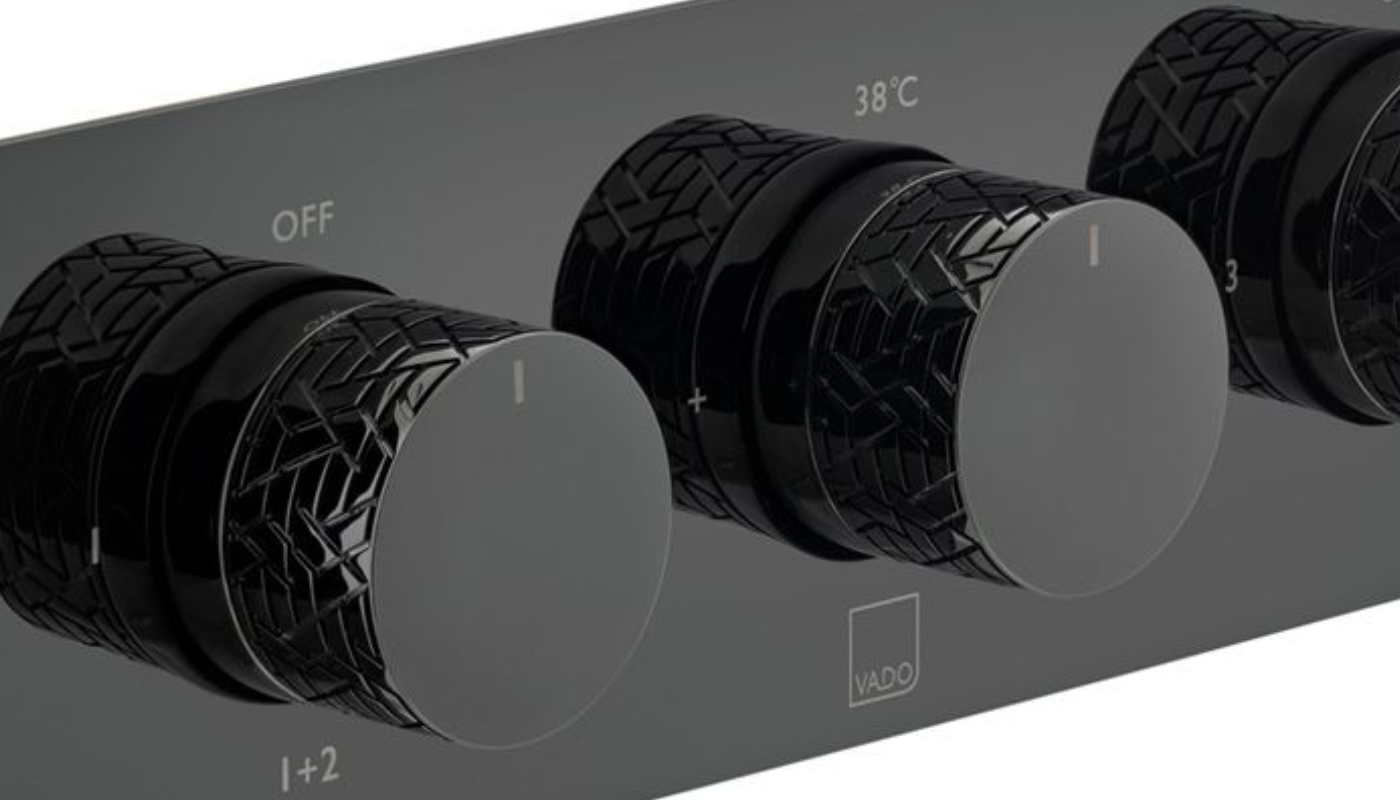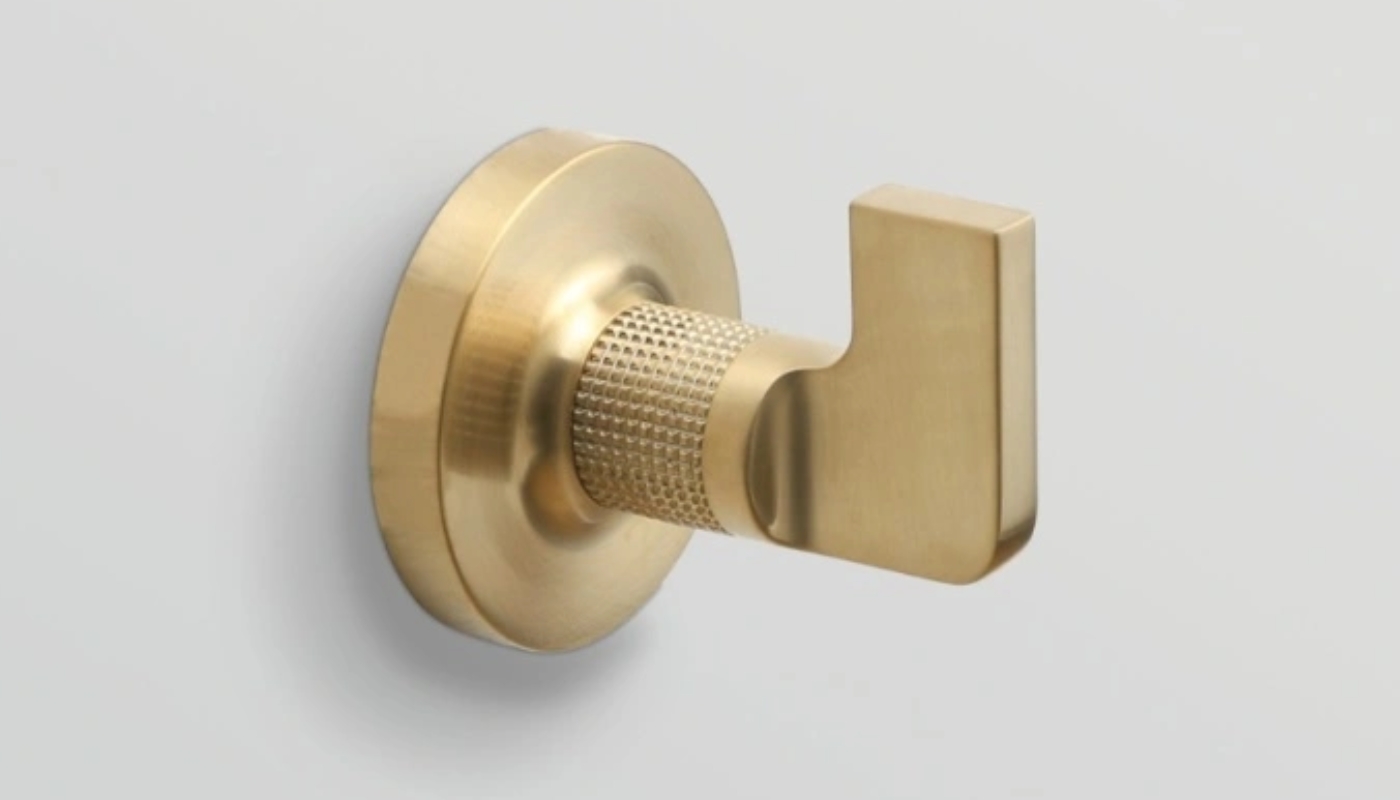What is Knurling on Handles, Knobs & Controls of Bathroom Fixtures?

Knurled, or knurling, are terms that may be used to describe design features of certain products whilst shopping around for bathroom items, in particular brassware and bathroom accessories. It is also something present in many other products that people of all ages, both young and old, have come across or used, even if they might not immediately recognise it or use the term.
But what exactly is knurling, what are its benefits, and do you actually need it? This guide will provide you with a comprehensive understanding of knurling and its application in bathroom products.
- What is Knurling?
- How is Knurling Done?
- Types of Knurling
- Pros of Knurled Bathroom Items
- Cons of Knurled Handles
- How To Look After & Clean Knurled Items?
What is Knurling?
Knurling (pronounced nurl with a silent ‘k’) is defined by the Oxford English Dictionary as ‘[making] knurls, beadings, or ridges’ on the edge of an item, or ‘to mill or crenate’, which in itself is another word for notching the edge of something with rounded teeth.
In simple terms, knurling is a pattern that is applied to products to provide a rough, ridged, or grooved finish in the material as part of the manufacturing process. When it comes to bathroom products, this is often applied to rounded elements and components such as handles, dials or controls of products both as a decorative element, as well as often adding a tactile surface to touch. For instance, you might encounter options with either a smooth finish or knurled handles when choosing bathroom taps. If you opt for the latter, you’ll notice that the lever control or tap head is decorated with a textured, grooved surface upon closer inspection.
Outside of bathrooms, it is used on everything from bicycle handles, dart shafts, to work tools, as well as many other items. There are several benefits to applying such a patterned design to items, as we will discuss later on in this guide.
How is Knurling Done?
Knurling is created as part of the manufacturing process of products. Historically, this could be done by hand using a rolling roll to impress the required pattern into the material using the force of pressure. However, as technology has advanced, companies have moved to machine knurling, where a lathe can be used to create the pattern effect via two methods, either cut knurling or form knurling. Form knurling uses the same method as the by-hand method, which uses force to impress the pattern into a surface, compacting the component's exterior. In contrast, cut knurling involves removing material to create the pattern instead, often providing a more precise and quality look but at a slower pace than form knurling.
Both methods have their pros and cons, and the required type depends on the application and material being used. Applying this to bathroom products, all that will be affected is the end result, finish, and quality. The actual function or performance of the product would not be affected in any way, other than operation and gripping.
Types of Knurling
After covering the way that knurling is applied to materials, it is now time to explore the types of knurling pattern available. In reality, while it is possible to create any knurled pattern, obviously those that are less common, more complicated, and require more time have substantial cost implications. As such, there are several common patterns that may be seen in knurled designs, which are typically created at a depth of between 0.2mm and 0.5mm:
Straight & Linear
The standard type of knurling, straight and linear knurling, involves the creation of straight vertical or horizontal lines.
Diagonal
Diagonal knurling creates a straight-line pattern at an angle. This comes in two types – left hand and right hand. Left hand starts from the right-hand side and goes diagonally up to the left. Right hand is the inverse of this, starting lower on the left and the straight line going up to the right. In the example above, the tap shows an element of diagonal knurling in both directions before being used to create a dimaond pattern.
Diamond
Diamond knurling is similar to diagonal but with the application of both left-hand and right-hand lines together. This creates a diamond effect pattern. Alternatively, it can be created with an actual diamond knurl itself.
Other patterns that may be mentioned are concave and convex, square, annular and helical. Most of these do have similarities to the three main ones mentioned above with differences in the end design. Of course, there is no reason why a knurled pattern cannot be created that is especially decorative as well.
Pros of Knurled Bathroom Items
When it comes to the pros and cons of knurled items, there are several benefits to investing in them over standard or smooth bathroom items. These are summarised below:
1. Grip & Operation
One of the main benefits of knurling items is that it can provide the benefit of extra grip. In a bathroom environment, using fixtures with wet hands can often lead to slips and struggles, particularly when trying to turn outlets on and off. When a product features a knurled design - like those found on shower valves or taps - it can significantly boost grip during use. The intricate pattern on a knurled handle ensures a secure hold, considerably reducing the risk of hands slipping and resulting in a smoother experience when operating controls.
2. Style, Decoration and Aesthetics
If the knurled finish is not applied to the handle itself but part of the body, such as a tap head, it can provide a stylish effect. The embossing of a knurled finish can help provide the look of a more premium product, as well as embodying certain style influences, such as industrial touches in modern bathroom spaces.
3. Tactile Benefits
Another feature of having a surface that is knurled is that it is extremely tactile. This means that it enhances the sense of touch when using a product, ideal for those where the feel and attraction of using all the senses is a vital component of a bathroom environment.
4. Durability
While good quality bathroom products offer reliability and durability, having an item with knurled features can help enhance its long-lasting appeal.
The Cons of Knurled Handles
When it comes to the cons, stylistically, the patterned design can be an off-putting feature for some people compared to just a smooth-surfaced item.
There is also a concern that a grooved surface can collect and hide dirt more than a smooth item does, however, with regular cleaning this should not be a problem. Ultimately, the benefits outweigh the cons except for the question of personal taste.
How To Look After & Clean Knurled Items?
In reality, looking after knurled bathroom items is no different to cleaning smooth or standard bathroom items.
This means regular cleaning with a soft cloth with hot, soapy water, ensuring that any grooves are washed effectively to remove any dirt or germs. Similarly, avoid any abrasive chemicals or substances that could harm the finish in any capacity. Be sure to consult the manufacturer’s care instructions after purchase to help your item last longer and remember to follow the warranty guidelines as well.
